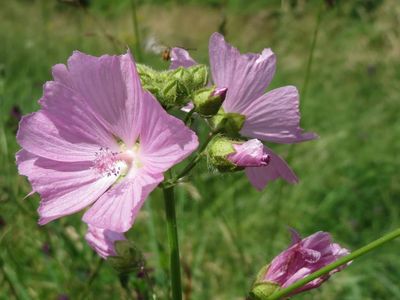Musk Mallow Info
Musk mallow (Malva moschata) was transported to North America by European settlers. Unfortunately, it has become invasive throughout much of the northwestern and northeastern parts of the United States, where it is likely to pop up in roadsides, along railroads and dry, grassy fields. Musk mallow often marks the location of old homesteads. Musk mallow is a hardy plant, suitable for growing in USDA plant hardiness zones 3 through 8. As with common mallow plants, it’s a good idea to consider the invasive potential before you consider growing musk mallow. Your local cooperative extension office is a good source of information. You can also contact the fish and wildlife service in your area.
How to Grow Musk Mallow
Plant musk mallow seeds outdoors in autumn or before the last frost in spring, covering each seed with a small amount of soil. Allow 10 to 24 inches (25 to 61 cm.) between each plant. Musk mallow thrives in full sunlight but will also adapt to partial shade. Although musk mallow tolerates poor, thin soil, it prefers well-drained growing conditions. Keep the soil moist after planting, especially during warm weather. Once established, musk mallow tolerates dry soil. However, an occasional irrigation is helpful during prolonged dry spells. Cut the plant to the ground in autumn as part of your musk mallow care each season.
